Neal Adams passed away this week. The net is full of tributes and remembrances from creators all across the spectrum, as Adams was a hugely important figure in the field, as an artist, one of the first true comic book superstars from a fan perspective, and as a crusader for artists’ rights. By the time I started following comic books in 1973, he was already largely gone from their pages, a figure of legend whose work was spoken of with reverence and awe. He’d turn up for the occasional cover, the once-in-a-blue-moon story, but his days as a regular rank-and-file comic book artist had come to an end by then, largely. His primary focus had become Continuity Studios, an advertising agency that he co-founded with Dick Giordano and which brought in a lot more money than comic books ever did. But he never strayed too far from their pages.
He did work for me a number of times over the years, and it became an odd pleasure that, when there was something that he needed to deal with Marvel on editorially, he came to me. I still think that the issue of NEW AVENGERS, #16.1, that he did with Brian Michael Bendis (inked by his old collaborator Tom Palmer and colored by Paul Mounts) was one of the best issues of that run. I know that it was important to Brian, a watershed mark in his career as well. Being the same age as me, Brian held Neal in the same regard (if not even perhaps a little higher.) I can remember Neal coming in to see me at the office (Neal Adams came to see me!) where he pitched a reimagining of the Kree-Skrull War from his AVENGERS run, and gave me a personally-inscribed copy of his BATMAN: ODYSSEY hardcover. Both he and Roy Thomas were independently interested in putting together some revisiting of their classic story—each man had become more vocal about how the key contributions to that storyline had been theirs and theirs alone, so not wanting to get myself or Marvel in the middle of that conflict, I passed on both projects. Even so, Neal still liked me, apparently. He reminded me of my Dad. He reminded everyone of their Dads.
He was a hell of an artist, one of the first (along with Jim Steranko) to view the page as a single unit of design. His style is often referred to as photorealistic, including by me, but that really only scratches the surface. His drawings felt real, even when the characters possessed the same sort of stylized and exaggerated anatomy that super heroes thrive on. He also pushed the boundaries on printing and coloring technologies, forcing companies to allow for a greater range of options than had previously been allowed. Coming from an advertising background, he understood printing and reproduction better than most of the editors and company officers he was dealing with, and between his talent and his fearlessness, he was adept at getting his way, at getting the mountain to move. He was also in those days a friend to young talent. As pretty much the first of his generation to break into the field, I suspect that Neal found the company of the older men who made up the workforce in the late 1960s a bit lonely, and so he helped hold the door open for almost any young guy that came along, so that he had a peer group. That said, Neal was notoriously hard on young artists, tearing them and their work apart without mercy, and perhaps even a bit of cruelty. But to balance that, for anybody who withstood his assault and came back again, he would provide work space, mentorship and camaraderie.
Neal drew the best Batman. The best Green Arrow. Close to the best Green Lantern. One of the best Supermans.
Neal had been ill for a while, so it didn’t come as a great shock that he had passed. But it’s still a hell of a loss.
Behind the Curtain
Here we have John Byrne’s original design drawing for Kitty Pryde, who was for a brief moment going to be code-named Ariel before the designation Sprite was landed upon by Byrne, editor Roger Stern and writer Chris Claremont. That’s most likely Chris’s handwriting at the left, working out the name and thinking about the powers that might justify it. By the time he drew up this sketch, Byrne was at least co-plotting X-MEN with Claremont if not often taking the lead on plots. In part, this was facilitated by his friendship with editor Stern and the fact that Chris was open to it in order to keep the artist on the series. But Claremont always got the last word in terms of how the stories that appeared on the page were handled, and Byrne grew increasingly unhappy with the spin Claremont would put onto sequences that he plotted and drew straightforwardly. This would lead to the break-up of the creative team some months down the line. Kitty was named after a young woman that Byrne knew from college, and she was originally drawn to resemble a young Sigourney Weaver, who had caused a sensation in the movie ALIEN. In Claremont’s hands, Kitty became a genius, a ninja, a bartender and, in one future timeline at least, the President of the United States. Byrne had intended for her to be just a regular ol’ girl from the midwest. But that creative friction between the two men brought out work that has stood the test of time and become legendary, the basis for everything that X-MEN has grown into since. I’m particularly intrigued by how Byrne has colored the boots here with red highlights, tying them into the belt, which is clever.
Pimp My Wednesday
Things are back to normal for the moment, it seems, and so I’ve got two books coming to a comic book retailer near you this Wednesday:
AVENGERS FOREVER #5 by Jason Aaron and Jim Towe with a cover by regular artist Aaron Kuder wraps up the opening salvo of this multiversal series while also delving into the twisted history of the Doom Supreme, leader of the Multiversal Masters of Evil. FOREVER is really the end product of the sorts of stories Jason was experimenting with during the HEROES REBORN sequence, where he could just let his imagination run wild and come up with the craziest, zaniest and most memorable moments possible. The story only gets wilder from here. At the same time, Jason is also really good about investing a lot of heart into his stories, and the revelations about Doom Supreme’s past and what drives him, what his goals are, fit that bill nicely.
Meanwhile, IRON MAN #19 brings the title’s long Korvac storyline to a conclusion, with a powerless Tony Stark on his very last legs as his cosmically-powered enemy reappears to take his revenge. I have to say, I feel that IRON MAN is something of a sleeper title at the moment, and I don’t quite know why. The writing by Christopher Cantwell has been top-notch from the start, as has the artwork from returning artist Cafu. I’m really pleased with the depth and insight they’ve brought to Tony Stark, and I’ve been a bit surprised that the series hasn’t caught on in a bigger way. Not sure why that is—possibly it’s just difficult to get readers invested in Tony Stark after the character breathed his last in his movie incarnation. The problem definitely isn’t those stunning covers by uber-painter Alex Ross. But I’ve overseen a lot of IRON MAN comics over the years, and I feel like this era has been maybe the best. So it’s not too late to hop on board—the first two collections are available now, and the climax all goes down this Wednesday. Trust me, it’s good.
A Comic Book On Sale 45 Years Ago Today, May 1, 1977
This one is a little bit of a cheat, but not really. While the original version of BLUE BEETLE #3 first came out a decade earlier, what we’re looking at here is the Modern Comics reprint of 1977. Modern Comics was a short-lived effort to sell comic books directly into department stores and toy stores, bypassing newsstand sales entirely. The books came three-to-a-plastic-bag. Modern had contracted with longtime publisher Charlton to reprint a number of issues from their back catalog—not only was this copy of BLUE BEETLE among them, but so were issues of CAPTAIN ATOM, E-MAN, JUDO MASTER and THUNDERBOLT, as well as a smattering of other war, weird, and martial arts mags. For those of us growing up in the 1970s, this was the first time we’d encountered the Blue Beetle (well, apart from the comical version of the character featured on the Electric Company, anyway.) This incarnation of the Blue Beetle was creator Steve Ditko’s follow-up to his work on AMAZING SPIDER-MAN, and the strip even reads a bit like Peter Parker has grown up and gotten a respectable job while still maintaining his life as a crime-fighter. It was terribly exciting to me to come across these comics in a Two-Guys bargain department story back then, as it was like an entire alternate universe of super heroes I’d never before encountered opened up to me. Modern Comics didn’t last long—they produced two or three flights of these reprinted Charlton books then exited the field from what I can tell. But I suspect that this short revival put the characters back onto the radar among fandom a bit, and made it slightly more likely when DC eventually purchased them all from Charlton as the latter was going out of business.
A Comic I Worked On That Came Out On This Date
Well, six comics in this case—all of which were released on May 1, 2002. And this wasn’t a fluke, either. In those days, myself and my editorial office (which included Marc Sumerak, Jeff Youngquist and Andy Schmidt at various points) were generating a ton of material—at the apex, we were literally putting out a third of the Marvel line. This was in part because publisher Bill Jemas had gotten a bit trigger-happy and had been cancelling titles he didn’t like without replacing them, so Marvel’s overall output was dropping. To keep the business going, you need to have a certain number of books in order to carry the division’s overhead, and at that moment, we were close to falling below that point. The situation righted itself over time, but for a brief window, my office was pretty much keeping Marvel afloat, at least in terms of quantity of releases. It’s a nice mix of books. DEADLINE was a passion project from Bill Rosemann, who was better known as Your Man At Marvel, our PR guy. CITIZEN V was a spin-off of the ongoing THUNDERBOLTS series by Fabian Nicieza and a just-starting0-out Lewis Larosa. AVENGERS: CELESTIAL QUEST was Steve Englehart’s last AVENGERS epic, SPIDER-GIRL was Tom DeFalco and Pat Olliffe (and later Ron Frenz)’s unkillable series about Spider-Man’s daughter—that’s a really strong Ron Frenz cover on this issue, good use of typography by Ron there.) THOR was in its LORD OF ASGARD phase by writer Dan Jurgens and artist Tom Raney—a status quo that the character has more or less returned to again today. And that issue of FANTASTIC FOUR was a fill-in by Karl Kesel and Stuart Immonen to help bridge the series from the end of Carlos Pacheco, Rafael Marin and Jeph Loeb’s time on the title to that of the incoming team of Mark Waid, Mike Wieringo and Karl Kesel. It’s no great secret that Jemas didn’t like my aesthetics, and he spent months telling anybody who would listen that my books all sucked. But I can look back on all six of those issues and feel pretty good about them. While they weren’t all of equivalent quality, there really wasn’t an out-and-out stinker in the bunch. I can still look them all square in the eye and stand behind them.
Monofocus
I’ve already written about the second SPACE BATTLESHIP YAMATO 2205 film over at my website, a handy link to which is embedded in this sentence. But I also caught up on a number of other shows this past week.
I sampled the first two episodes of Apple’s SEVERENCE, which were dark and disturbing and a bit hallucinatory. It’s an interesting show with an interesting premise: the workers at a high-tech company agree to undergo a procedure that bifurcates their minds into work-mode and home-mode. Meaning that, when they are at work, they have no knowledge of their lives outside, and when they are away, they remember nothing about the work they are doing. While this sounds like a good idea on the surface (especially to the shady company) the problems start to crop up right away. For one thing, the work-selves have no respite from their constant toil—the instant they depart for the evening, they instantly find themselves back at work ready to resume the following day, with no time seeming to have passed for them. On top of that, there are mysterious things afoot, only some of the shape of which has started to emerge. I’m hearing good things about how well this first season sticks the landing, so I’m on board for the rest of them.
Meanwhile, over on HBO, BARRY came back for a third season. It’s a great show, albeit one that’s beginning to show evidence that its simple premise—a hitman who finds absolution and satisfaction in becoming an actor—can’t sustain this long of a journey. While the first season was super-tight and the second found its sea legs quickly enough, based on the opening episode of this season, the show is struggling to find new places to push its characters. At a certain point, like any show of this nature that is built on a tightrope, everything inevitably has to come crashing down into disaster. Either way, Henry Winkler remains a joy as Gene Cousineau, Barry’s acting instructor, and Bill Hader shows remarkable depth and sensitivity in the role. So, hopefully, it’ll find its equilibrium again. The first episode wasn’t bad, I simply found it a bit labored.
And then finally, speaking about shows that have outlasted their premises, RUSSIAN DOLL came back for what should have been an unnecessary second season, the ending to season one having brought Nadia’s recursive time-loop journey to a finale. But the show succeeds by mixing up its premise: this time, Nadia discovers that whenever she takes a particular subway line, she emerges from the train in 1982, inhabiting the body of her very pregnant mother. This lets the show pull a bunch of narrative tricks that are similar to what made it work in the first year while not getting directly repetitive. The entire cast is given a bunch more to do as well, since they’re not all stuck replaying the same evening over and over again, which is nice.
I’m sure that I’m over the limit again—it’s the graphics that I add in that carries me over it, I’m afraid. But before I sign off, I’d like to thank everybody who’s been supporting this ridiculous effort so far, in particular Chip Zdarsky and Jason Aaron, whose recommendations appear to have sent quite a few people this way. Appreciate it!
We’ll be back for more next week!
Tom B

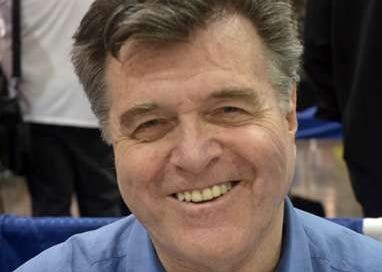



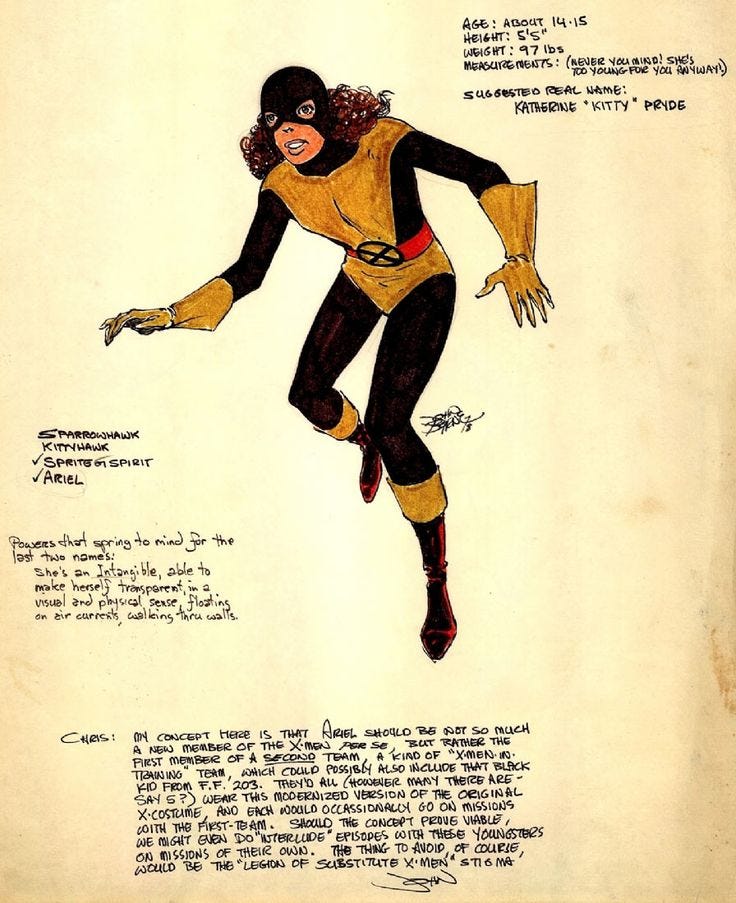
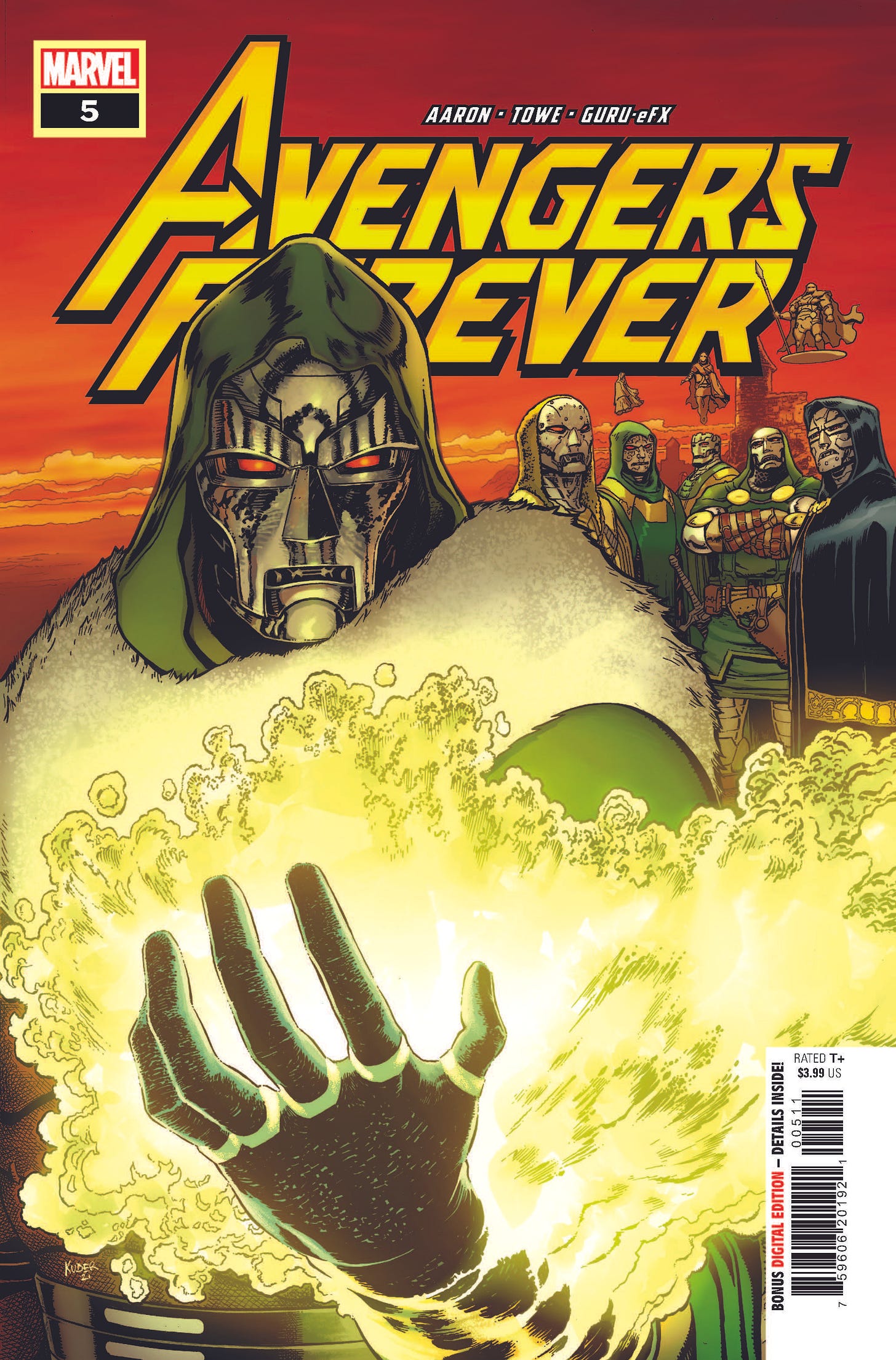
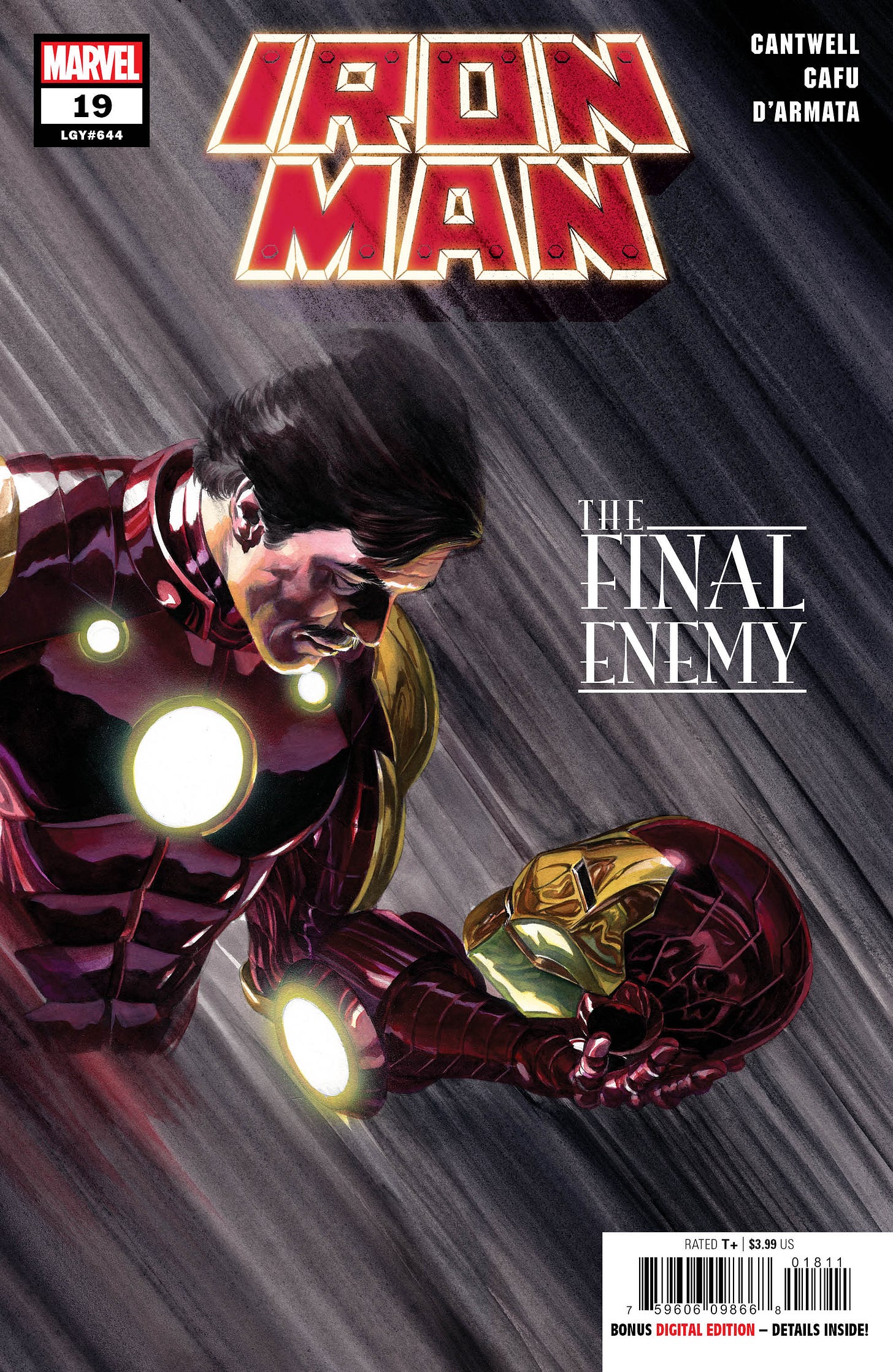
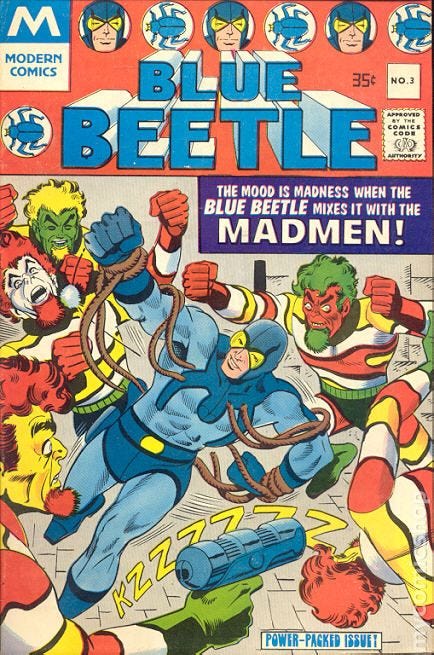
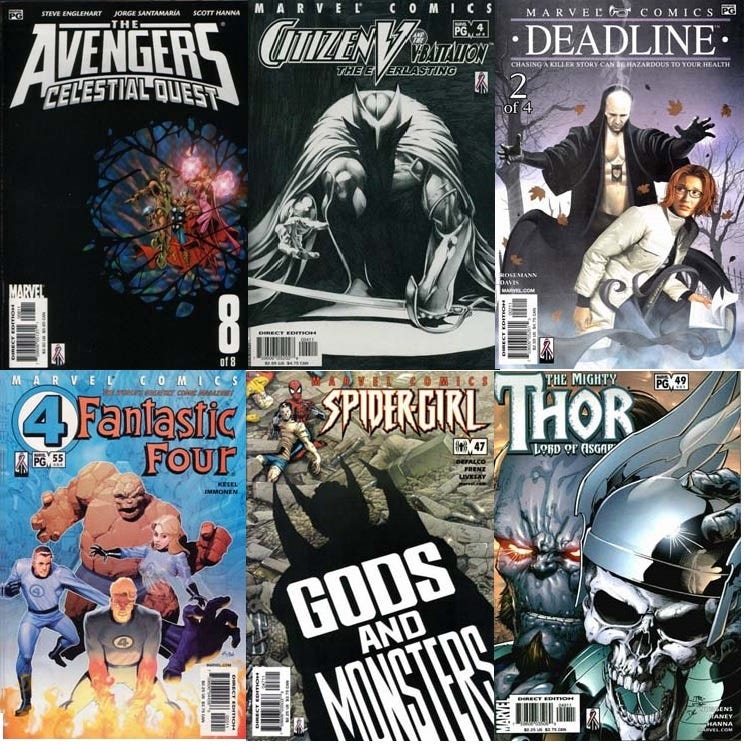
Tom, as you know, I'm always here for you, until you stop giving me work
Lovely stuff Tom.